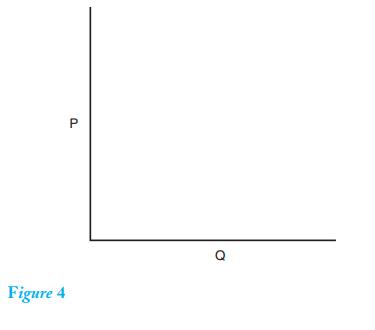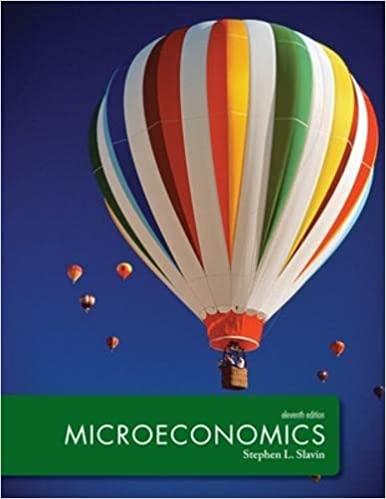Draw a demand curve, D 1 , in Figure 4. Then draw a second demand curve, D
Question:
Draw a demand curve, D1 , in Figure 4. Then draw a second demand curve, D2 , that illustrates a decrease in demand.

Transcribed Image Text:
Figure 4 P Q
Step by Step Answer:

This question has not been answered yet.
You can Ask your question!
Related Book For 

Question Posted:
Students also viewed these Business questions
-
Frequent Fixer is a manufacturer of commercial-use heavy equipment. During 2017, Frequent Fixer participated in an industry benchmark study, conducted by a key competitor, of the accounting policies...
-
Social Norms and Private Actions: When asked to explain our actions, we sometimes simply respond by saying it was the right thing to do. The concept of the right thing to do is one that is often...
-
PLEASE GIVE CORRECT ANSWERS Prove that the number of comparators in any sorting network is (n log n). [4 marks] (ii) What does Part (d)(i) imply in terms of the depth of any sorting network? [1 mark]...
-
Which statement about the pass-by-reference is NOT true? a.Every time you pass a reference variable to a method, you also pass the object referred by the refenerece variable to the method. b.In the...
-
Befuddled Corporation collected the following information on inflows and outflows for 2019: Inflows Cash collections from sales .................................. $956,500 Proceeds from disposal of...
-
In Problems 5-15 and 5-16, three different forecasts were developed for the demand for fertilizer. These three forecasts are a 3-year moving average, a weighted moving average, and a trend line....
-
Suppose you are testing Exercise 7 at Do you still make the same decision? Explain your reasoning.
-
Read Appendix 9-1. Referring to Exhibit 9-14 and related notes, assume instead that Toyozas inventories were costed using the FIFO method and that Lincoln Enterprises employed the LIFO method....
-
wich of the following is true for military taxpayer?
-
Draw a supply curve, S 1 , in Figure 5, and a second supply curve, S 2 , that represents an increase in supply. Figure 5 P Q
-
Equilibrium price is $ _________; equilibrium quantity is _______.
-
How is the amount of net investment income determined for a taxpayer with investment expenses and other noninvestment miscellaneous itemized deductions?
-
Define subjective brightness and brightness adaptation?
-
Write Down The Properties Of Haar Transform?
-
Explain Spatial Filtering?
-
What Is Maximum Filter And Minimum Filter?
-
Name The Categories Of Image Enhancement And Explain?
-
The fairness of the South African lottery was recently challenged by one of the country's political parties. The lottery publishes historical statis¬tics at its website...
-
Planning: Creating an Audience Profile; Collaboration: Team Projects. Compare the Facebook pages of three companies in the same industry. Analyze the content on all available tabs. What can you...
-
Use your demand schedule for a public good, determined in question 1, and the following supply schedule to ascertain the optimal quantity of this public good. Why is this the optimal quantity? P Qd...
-
Why are spillover costs and spillover benefits also called negative and positive externalities? Show graphically how a tax can correct for a negative externality and how a subsidy to producers can...
-
An apple growers orchard provides nectar to a neighbors bees, while the beekeepers bees help the apple grower by pollinating the apple blossoms. Use Figure 16.2b to explain why this situation of dual...
-
Famas Llamas has a weighted average cost of capital of 8.8 percent. The companys cost of equity is 12 percent, and its pretax cost of debt is 6.8 percent. The tax rate is 22 percent. What is the...
-
The common stock of a company paid 1.32 in dividens last year. Dividens are expected to gros at an 8 percent annual rate for an indefinite number of years. A) If the company's current market price is...
-
(1 point) Bill makes annual deposits of $1900 to an an IRA earning 5% compounded annually for 14 years. At the end of the 14 years Bil retires. a) What was the value of his IRA at the end of 14...

Study smarter with the SolutionInn App


